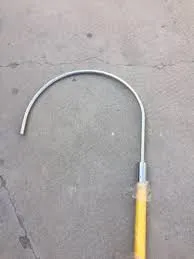
-
 Afrikaans
Afrikaans -
 Albanian
Albanian -
 Amharic
Amharic -
 Arabic
Arabic -
 Armenian
Armenian -
 Azerbaijani
Azerbaijani -
 Basque
Basque -
 Belarusian
Belarusian -
 Bengali
Bengali -
 Bosnian
Bosnian -
 Bulgarian
Bulgarian -
 Catalan
Catalan -
 Cebuano
Cebuano -
 Corsican
Corsican -
 Croatian
Croatian -
 Czech
Czech -
 Danish
Danish -
 Dutch
Dutch -
 English
English -
 Esperanto
Esperanto -
 Estonian
Estonian -
 Finnish
Finnish -
 French
French -
 Frisian
Frisian -
 Galician
Galician -
 Georgian
Georgian -
 German
German -
 Greek
Greek -
 Gujarati
Gujarati -
 Haitian Creole
Haitian Creole -
 hausa
hausa -
 hawaiian
hawaiian -
 Hebrew
Hebrew -
 Hindi
Hindi -
 Miao
Miao -
 Hungarian
Hungarian -
 Icelandic
Icelandic -
 igbo
igbo -
 Indonesian
Indonesian -
 irish
irish -
 Italian
Italian -
 Japanese
Japanese -
 Javanese
Javanese -
 Kannada
Kannada -
 kazakh
kazakh -
 Khmer
Khmer -
 Rwandese
Rwandese -
 Korean
Korean -
 Kurdish
Kurdish -
 Kyrgyz
Kyrgyz -
 Lao
Lao -
 Latin
Latin -
 Latvian
Latvian -
 Lithuanian
Lithuanian -
 Luxembourgish
Luxembourgish -
 Macedonian
Macedonian -
 Malgashi
Malgashi -
 Malay
Malay -
 Malayalam
Malayalam -
 Maltese
Maltese -
 Maori
Maori -
 Marathi
Marathi -
 Mongolian
Mongolian -
 Myanmar
Myanmar -
 Nepali
Nepali -
 Norwegian
Norwegian -
 Norwegian
Norwegian -
 Occitan
Occitan -
 Pashto
Pashto -
 Persian
Persian -
 Polish
Polish -
 Portuguese
Portuguese -
 Punjabi
Punjabi -
 Romanian
Romanian -
 Russian
Russian -
 Samoan
Samoan -
 Scottish Gaelic
Scottish Gaelic -
 Serbian
Serbian -
 Sesotho
Sesotho -
 Shona
Shona -
 Sindhi
Sindhi -
 Sinhala
Sinhala -
 Slovak
Slovak -
 Slovenian
Slovenian -
 Somali
Somali -
 Spanish
Spanish -
 Sundanese
Sundanese -
 Swahili
Swahili -
 Swedish
Swedish -
 Tagalog
Tagalog -
 Tajik
Tajik -
 Tamil
Tamil -
 Tatar
Tatar -
 Telugu
Telugu -
 Thai
Thai -
 Turkish
Turkish -
 Turkmen
Turkmen -
 Ukrainian
Ukrainian -
 Urdu
Urdu -
 Uighur
Uighur -
 Uzbek
Uzbek -
 Vietnamese
Vietnamese -
 Welsh
Welsh -
 Bantu
Bantu -
 Yiddish
Yiddish -
 Yoruba
Yoruba -
 Zulu
Zulu


ಡಿಸೆ . 01, 2024 01:14 Back to list
Effective Techniques for Using Fish Tape in Electrical Wiring Projects
The Ultimate Guide to Fish Tape Use
Fish tape, an essential tool in the realm of electrical work and cable installation, has been a reliable companion for electricians for decades. This flexible, flat steel or fiberglass tape is designed to push or pull wires through conduit or walls with ease. Its simplicity belies its importance, making it a staple in both professional and DIY electrician toolkits.
Understanding Fish Tape
At its core, fish tape is a long, narrow strip that can be bent and maneuvered through various spaces, allowing electricians to route cable efficiently. Available in various lengths, fish tapes typically range from 25 to 200 feet, with some specialized versions reaching even longer distances. The material also varies – metal fish tapes are robust and ideal for heavier tasks, while fiberglass versions offer flexibility and are less prone to corrosion.
When to Use Fish Tape
Fish tape is most commonly employed when running electrical wiring through walls, ceilings, or conduits that may have tricky bends or tight corners. It is especially useful in situations where traditional methods may be cumbersome or impossible. For instance, if an electrician needs to pull multiple wires through a conduit or a wall cavity, fish tape can streamline the process.
Using fish tape becomes paramount when working with longer runs of cable, such as in commercial buildings or renovations where existing infrastructure may complicate the installation. Additionally, fish tape assists in situations where access points to run the cable are limited, ensuring that wire pulls can be completed efficiently and without undue stress on the cables.
Best Practices for Using Fish Tape
fish tape use

1. Preparation Before beginning the wire pull, it's critical to plan the route for the cable. Ensure that the pathway is unobstructed, and clear any potential blockages within the conduit or wall.
2. Secure the Tap Attach the wire or cable securely to the end of the fish tape. Many fish tapes come equipped with a hook or a loop to facilitate this connection, but electricians should also use electrical tape for added security.
3. Feeding the Tape Insert the fish tape into the conduit or wall cavity carefully. If encountering any resistance, gently maneuver the tape, but avoid forcing it to prevent damage.
4. Pulling the Wire Once you reach the desired destination, begin pulling the fish tape back out carefully. As you do so, the attached wire will follow. It's essential to apply even pressure to ensure that the wires are not damaged in the process.
5. Avoiding Friction To minimize friction as the wire moves through bends or turns, consider using a lubricant designed for wires. This can further reduce wear and tear on both the fish tape and the wires being pulled.
6. Storage and Maintenance After the job is complete, it’s essential to clean and properly store your fish tape. Keeping it coiled and away from moisture will prolong its life and maintain its flexibility.
Conclusion
Fish tape is a fundamental tool that significantly eases the process of running electrical wiring. Its versatility, reliability, and effectiveness make it indispensable for both seasoned professionals and aspiring DIYers. By following best practices and understanding the proper techniques for using fish tape, you can ensure a smooth and efficient electrical installation process. Whether you're adding a new circuit or updating an existing system, mastering the use of fish tape will enhance your workflow and outcomes, making the task of wiring not just easier but more enjoyable.
Latest news
The Unique Design of Cable Socks
NewsJun.04,2025
Swivel Connectors in Industrial Automation
NewsJun.04,2025
Safety Features of Link Sticks
NewsJun.04,2025
How to choose the best cable pulling winch for sale
NewsJun.04,2025
Fish tape safety precautions
NewsJun.04,2025
Essential Maintenance Tips for Cable Pulling Tools
NewsJun.04,2025











